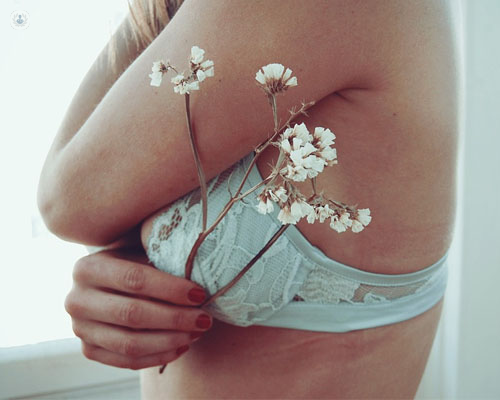Breast augmentation with prostheses with polyurethane cover: a solution for the future, now
Written by:Nowadays breast augmentation surgery in all its variants (simple enlargement mammoplasty, mastopexy with implants and correction of mammary malformations) is the most demanded surgery of aesthetic surgery.
The advances in surgical and anesthetic techniques, together with the improvement in the technological development of breast implants, make it a very safe intervention, with predictable results and a high satisfaction index.
In search of greater safety and durability in the result, silicone gel implants of high cohesiveness with rugged multilayer cover and anatomical shape, have been positioned as the preferred option by plastic surgeons and patients.
However, events such as capsular contracture ; implant rotation; periprosthetic seroma; or thinning of the tissue due to the gravitational effect of the implant, with the appearance of the phenomenon of "rippling" (superficial undulations), are problems that are associated with this type of implants and are accentuated with the passage of time.

In order to avoid or minimize its appearance, a new type of implants is increasingly positioning itself as the first choice in breast cosmetic surgery interventions.. These are implants with polyurethane cover (ICP) .
These implants are manufactured with the same technology as conventional implants, adding at the end of the manufacturing process a last outer layer of polyurethane foam, giving it what we call a supertextured cover.
While any implant induces the appearance of a "scar" that surrounds and isolates it inside the organism, called "periprosthetic capsule"; ICPs allow a greater adherence of the tissues that surround it, and induce the appearance of a three-dimensional microscopic mesh with a configuration different from that of conventional textured implants, which favors greater integration with the patient's breast.
This characteristic causes the ICP to present lower rates of capsular contracture. On the other hand, the greater initial adherence also contributes to practically eliminating the risk of rotation, malposition or delayed seroma.
Taking into account that today patients demand a larger volume, the perfect adhesion of these implants to the thorax decreases the gravitational force exerted on the breast, reducing its distension and thinning; getting an aging effect of the breast, preventing the appearance of stretch marks or the phenomenon of "rippling".
Although the first generation of these implants arose two decades ago, the technical requirement in its handling for the surgeon and its high manufacturing cost, have meant that its use to date has been limited. However, with the emergence of this NEW second generation and the acceptance of its benefits by the INTERNATIONAL SCIENTIFIC COMMUNITY, its use is widespread, constituting a basic option in my daily practice.


